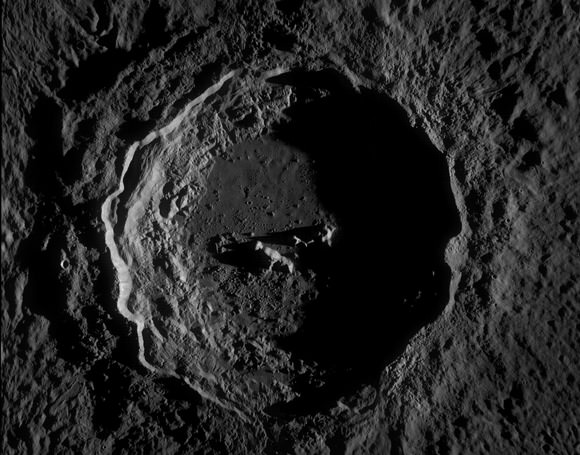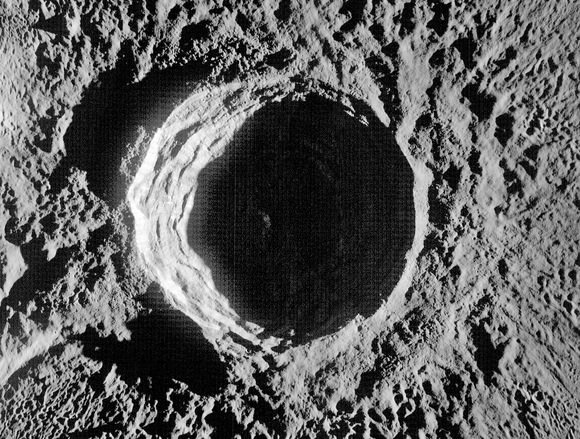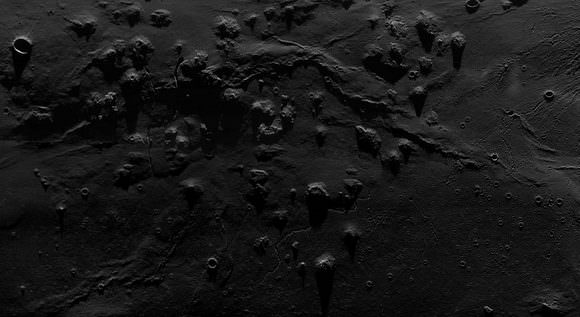[/caption]
Here’s a look at the Moon in a way we’ve never quite seen it before: a close up, but wide angle view. The Lunar Reconnaissance Orbiter camera actually consists of three cameras: there are two narrow-angle cameras which make high-resolution, black-and-white images of the surface, with resolutions down to 1 meter (about 3.3 feet). A third, a wide-angle camera (WAC), takes color and ultraviolet images over the complete lunar surface at 100-meter (almost 330-foot) resolution. However, the raw wide-angle images are somewhat distorted by the camera, but Maurice Collins, a Moon enthusiast from New Zealand, found that putting several images together in a mosaic removes a lot of the distortions and produces a much clearer image. The results are nothing short of stunning; here are a few example of Maurice’s handiwork, including this jaw-dropping image of the Marius Hills region of the Moon. Click on any of these images for a larger version on Maurice’s website, Moon Science

Maurice told me that he has been studying the Moon for about ten years now, and he does telescopic imaging of the Moon from his backyard Palmerston North, New Zealand as well as study the various spacecraft data. “I found out how to process the WAC images from Rick Evans (his website is here ) for the Octave processing method, and I also use a tool developed by Jim Mosher for another quicker technique,” Maurice said. Several of Maurice’s images have been featured on the Lunar Photo of the Day website.

Other areas of lunar imaging work he has done is using the Lunar Terminator Visualization Tool (LTVT) to study the lunar topography from the Lunar Orbiter Laser Altimeter (LOLA) digital elevation model laser altimeter data.
“Using a previous DEM from the Kaguya spacecraft I discovered a new large (630km long) mountain ridge radial to the Imbrium basin which I have nicknamed “Shannen Ridge” after my 9 year old daughter,” he said. See the image of Shannen Ridge here.
Maurice said he is usually out every clear night imaging or observing the Moon with his telescope. Thanks to Maurice for his wonderful work, and for allowing us at Universe Today to post some of the images. Check out his complete cache of WAC mosaics at his website.
hat tip: Stu Atkinson!

